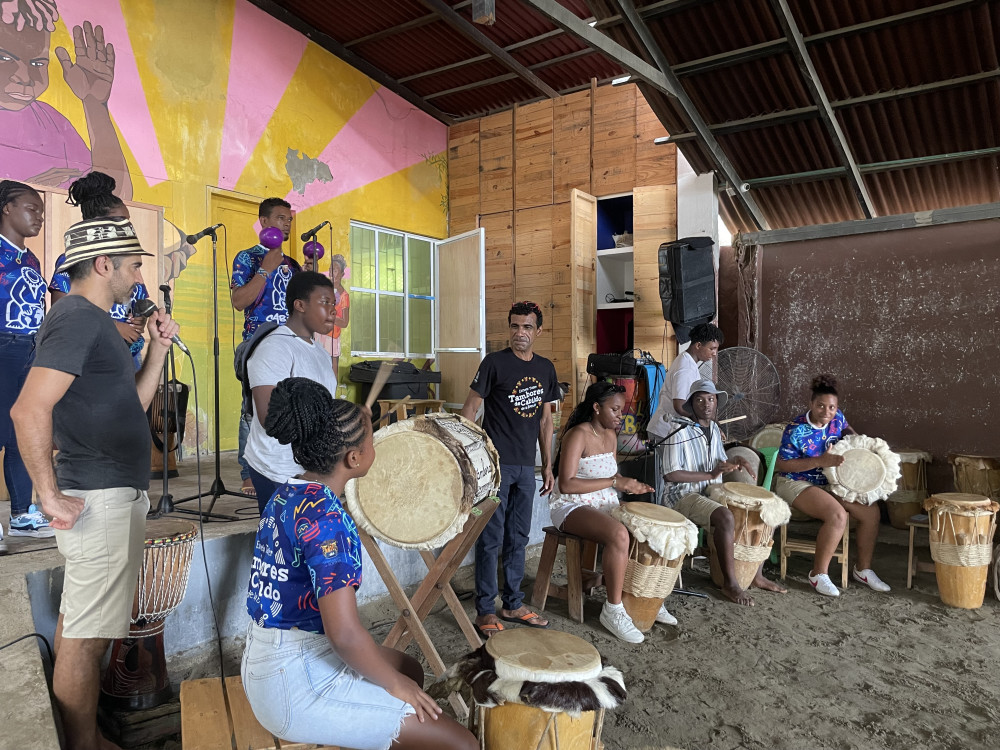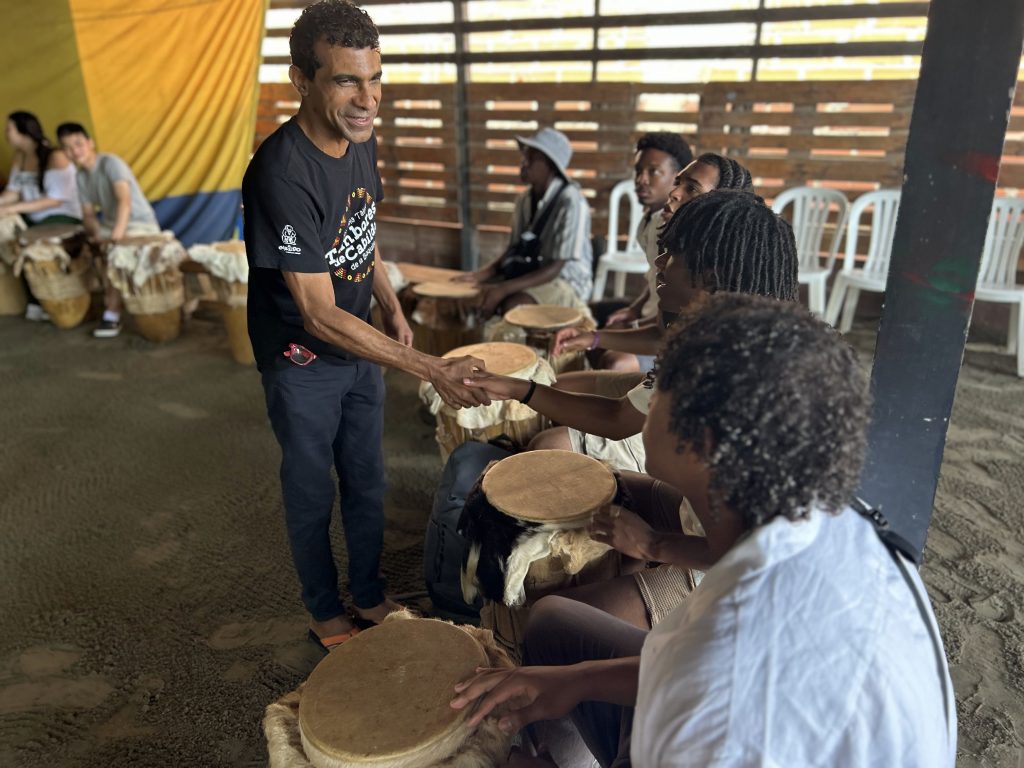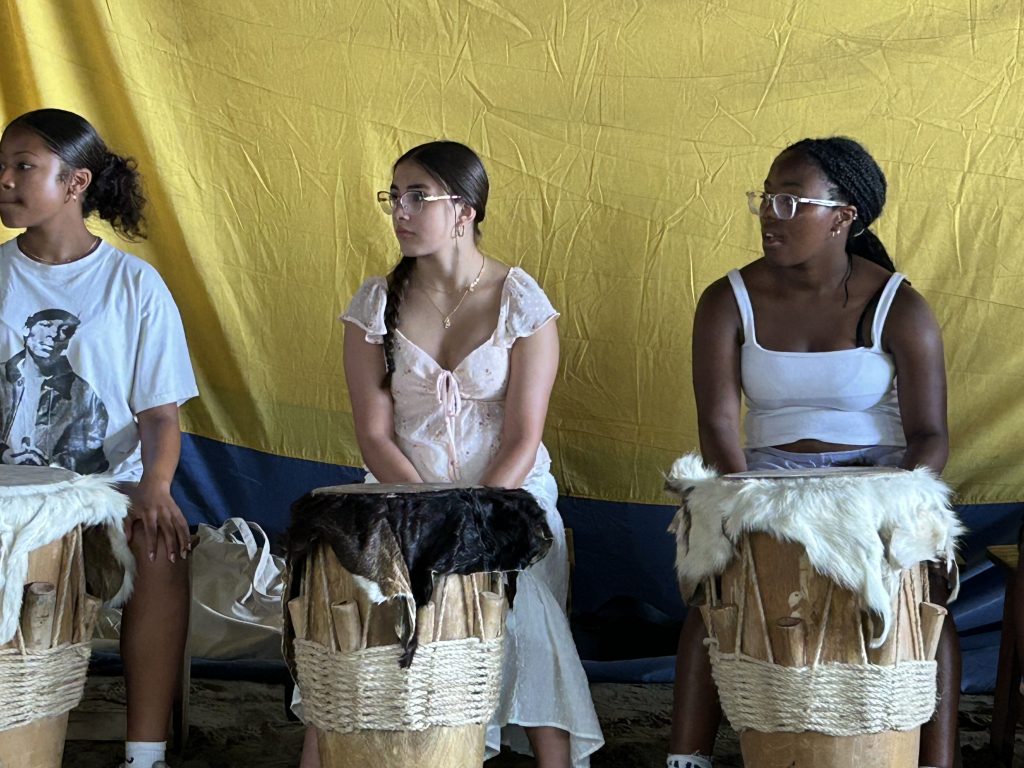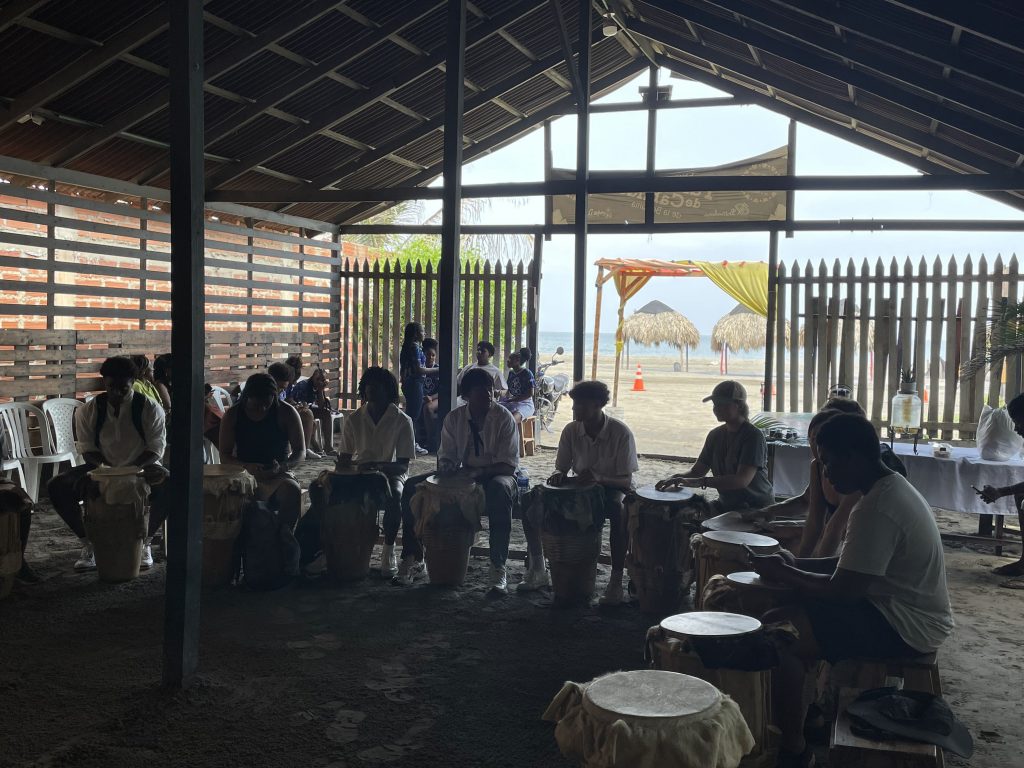Andy ’25, Reagan ’27, and Thomas ’25, reflect on a day full of cultural connections through music.
With the humid heat brushing against our air-conditioned skin, we stepped out of the bus and into Escuela Taller Tambores de Cabildo, a school of brilliant drummers and singers that we’ll be collaborating with. At the start of our day, Rafael, the leader of the school, walked us to the beach in front of the school. He gestured towards his right, pointing out high-rise apartments that jut out from the peaceful coastline. He swept his hand across the horizon. “They are trying to build apartments into the town,” he said. “To force our approval, they are limiting our internet, and they are cutting off our water supply. But the town is fighting back. This school was founded with the resources and the support of all the townspeople. Together, we resist by playing our music.”
I struggled with Rafa’s idea. Even as our drumming shook the heavens, I didn’t understand how music could fight against gentrification.
In the afternoon, we scaled La Popa. From the highest point of Cartagena, we surveyed the whole city. We saw the bustling streets, filled with shops and people and motorbikes. We saw the paste-white apartments that outlined the city’s bay.
We walked to the other side of the hill. Weather-worn buildings and dilapidated shacks filled our eyes. The houses, crammed into the streets, seemed to gasp for air themselves. “This is the other side of Cartagena,” Juanchi, our tour guide, said, “the side that tourists don’t see.” I was shocked that the beautiful city we had been in is so far removed from the living conditions of so many locals.
A million people walk the streets of Cartagena. 478,000 of them live below the poverty line. 1 “Without government action, the wealth inequality will only grow,” Juanchi said. “The rich people will always find ways to take advantage of the poor people.” At dinner, Cairon ‘25 affirmed Juanchi’s sentiment: “Laissez-faire will never work. You’d put too much trust in the people.”
I thought about what Rafael said earlier. In a Laissez-faire economy, the rich may take advantage of the poor. But through collective action, through communities gathering their voices to express what they want, the people can fight back. Together, our drums represent the town of Boquillo fighting back against gentrification. Together, we resist by playing our music.
-Andy ’25
1 Source: Alcaldía de Cartagena.
If there is one thing I have learned on this journey to Colombia so far, it is that the cultural passion is infectious. Our first full day in and around Cartagena was filled with new opportunities and challenges that I wouldn’t have anticipated. After a refreshing breakfast, we took a bus to the Escuela Taller Tambores de Cabildo. Just like in their name, we spent the morning exploring the many modes of playing the tambor, or drum. Our lesson of the day was all about a Colombian rhythm called cumbia. I am not, by any means, an instrumentalist, but I decided that today I would try my hand at this complex rhythm surrounded by some of the most seasoned professionals. It went exactly how you’d expect it would, but I learned a very valuable lesson. There is no time like the present to learn something amazing from some of the very best. The teachers of the Escuela were extremely welcoming and compromising, helping me integrate my newfound tambor skills into our first rehearsal of El Pescador. In a mix of drummers from Colombia and my Deerfield friends, I could feel the support of the band and the passion within the music.
By going outside of my comfort zone and allowing myself to connect with music through a different approach, I can now understand how to truly feel the beats and rhythms of the songs and the culture. When we finished our rehearsals for the day, we drove back into the city for a delicious meal and then went back to the hotel for some downtime. Between some fun pool activities and short naps in our rooms, the group is already sharing stories and laughter. We reflected on the eventful day over some more traditional Colombian meals and I cannot wait to see what tomorrow has in store!
-Reagan ’27
Colombia is hot! I wasn’t sure exactly what to expect when the plane soared over my first sight of Colombia: a small green island with a sandy shore surrounded by the turquoise waters that I have always seen from photos of the Caribbean. Today was our first full day, and through all our different activities, the one thing you can rely on is the muggy air that sticks to your skin. Today I woke up around eight and had a breakfast of eggs, yogurt, pineapple, and papaya which was delicious and refreshing. We then took a bus to the school (Escuela Taller Tambores de Cabildo) where we learned four different sounds on the drums, met the students and listened to their music, and were treated to some arepas. The students were all very musically talented and I enjoyed using my Spanish to get to know some of them. The arepas were also very delicious, made from corn dough stuffed with eggs and meat and then fried.
After lunch we went to the top of El Cerro de la Popa which is a hill from which you can see the entire city of Cartagena and the coastline. From there you can see the divide between the wealth of the inhabitants. We are staying in the wealthier part of the city which has a wall around part of it that was constructed in the 1700’s by the Spanish conquistadors. During these times, Cartagena was a major port through which many African slaves arrived which resulted in musical blends like cumbia that we played with the school today. There is still somewhat of a struggle to preserve these African roots today. The school we visited, for example, represents a resistance to the gentrification of the area by preserving the music.
After we went to the top of the hill (which I need to acknowledge how skillfully our bus driver managed each tight turn) some of us went to the pool to refresh from the heat. We then went to a restaurant for dinner (I had very good fried tilapia, plantains, and salad) and now I find myself writing this reflection. Overall, Cartagena is a dense city with nearly one million inhabitants and definitely has a city feel with its narrow streets and vendors, yet I do not feel too cramped. Many of the stores and restaurants are painted nice bright colors and often have a more open layout. Some of the streets have vines that snake up the walls and bloom with flowers to lighten the feel of the city. I look forward to learning more about the city’s geography and history that provides context for the cultural/musical practices we will experience these next few days!
-Thomas ’25
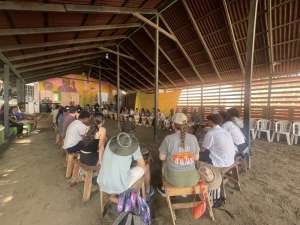

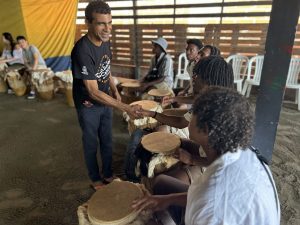

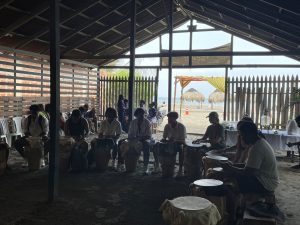
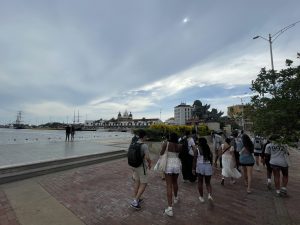
Check out some videos of the day through the following Music at Deerfield Instagram account.

